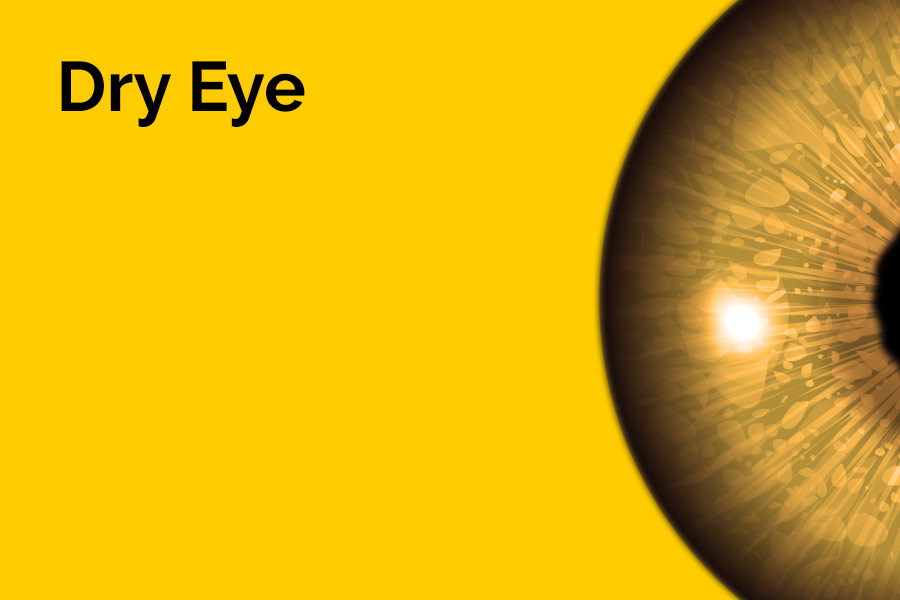Dry Eye
Dry eye syndrome (also known as dry eye disease) is a common condition that occurs when the eyes are unable to produce enough tears, or the tears evaporate too quickly.
Dry eye can make the eye feel dry, scratchy and uncomfortable. It generally affects both eyes but on occasions can cause greater discomfort in one eye than the other.
If left untreated, dry eye can lead to pain, scarring and ulcers on the cornea, and some loss of vision. Permanent loss of vision from dry eye is extremely rare.
Symptoms
The majority of cases of dry eye syndrome have mild symptoms however more severe cases can be painful and lead to complications.
Dry eye syndrome generally affects both eyes and can lead to a feeling of drowsiness, grittiness or soreness that gets worse throughout the day. In the morning your eyelids may be stuck together when you wake up. Dry eye syndrome generally leads to burning, red eyes and temporary blurred vision.
Diagnosis, Screening and Tests
Persistent, mild symptoms of dry eye syndrome can be referred to a high-street optician. The optician will be able to check if the problems are caused by any underlying conditions and can refer you to an eye specialist if required.
If you are experiencing severe symptoms please contact your optician or GP immediately. If this is not possible please visit your nearest accident and emergency department.
Treatments
Dry eye syndrome is not generally a serious condition and several treatments are available to help relieve the symptoms.
Artificial Tears
These come in the form of eye drops and gels and can be purchased from pharmacies or available on prescription. Initially, you may have to use them fairly regularly however once the symptoms begin to improve you may have to use them less regularly.
Several gels and eye drops are currently available on the market. As each contains different ingredients you may find that some relieve your symptoms better than others.
Contact lens wearers should always seek advice from their pharmacist before using any form of eye drops.
Eye ointment
A soothing and lubricating ointment can be applied at bedtime for overnight. These ointments are available on prescription or can be purchased in a pharmacy. Please note that these ointments should not be used during the day as it may lead to blurred vision. If you are using any other form of eye drops please ask your pharmacist if these ointments are suitable to use.
Artificial tears and ointments work well in most cases, however, more severe symptoms may require further treatment.
- Surgery can be performed to stop the tears from draining away
- Medicines such as pilocarpine can be used to promote tear production by the tear gland
- Anti-inflammatory eye drops or tablets can be taken
- Plugs can be inserted into the lacrimal ducts forming a temporary block, stopping tears from draining away.
It is believed that fats from fish oils (omega-3) in the diet, or taken as supplements can help reduce the symptoms of dry eye.
Prevention
If you experience dry eyes, pay attention to the situations that are most likely to cause your symptoms and try to find ways to avoid them. Some examples are:
- Avoid air blowing directly into your eyes
- Add moisture to your eye
- Consider wearing wraparound sunglasses or similar protective eyewear
- Rest your eyes regularly during long tasks
- Be aware of the conditions of your environment
- Ensure your computer is positioned below eye level
- Stop smoking and avoid getting smoke in your eyes
- Use artificial teardrops regularly
